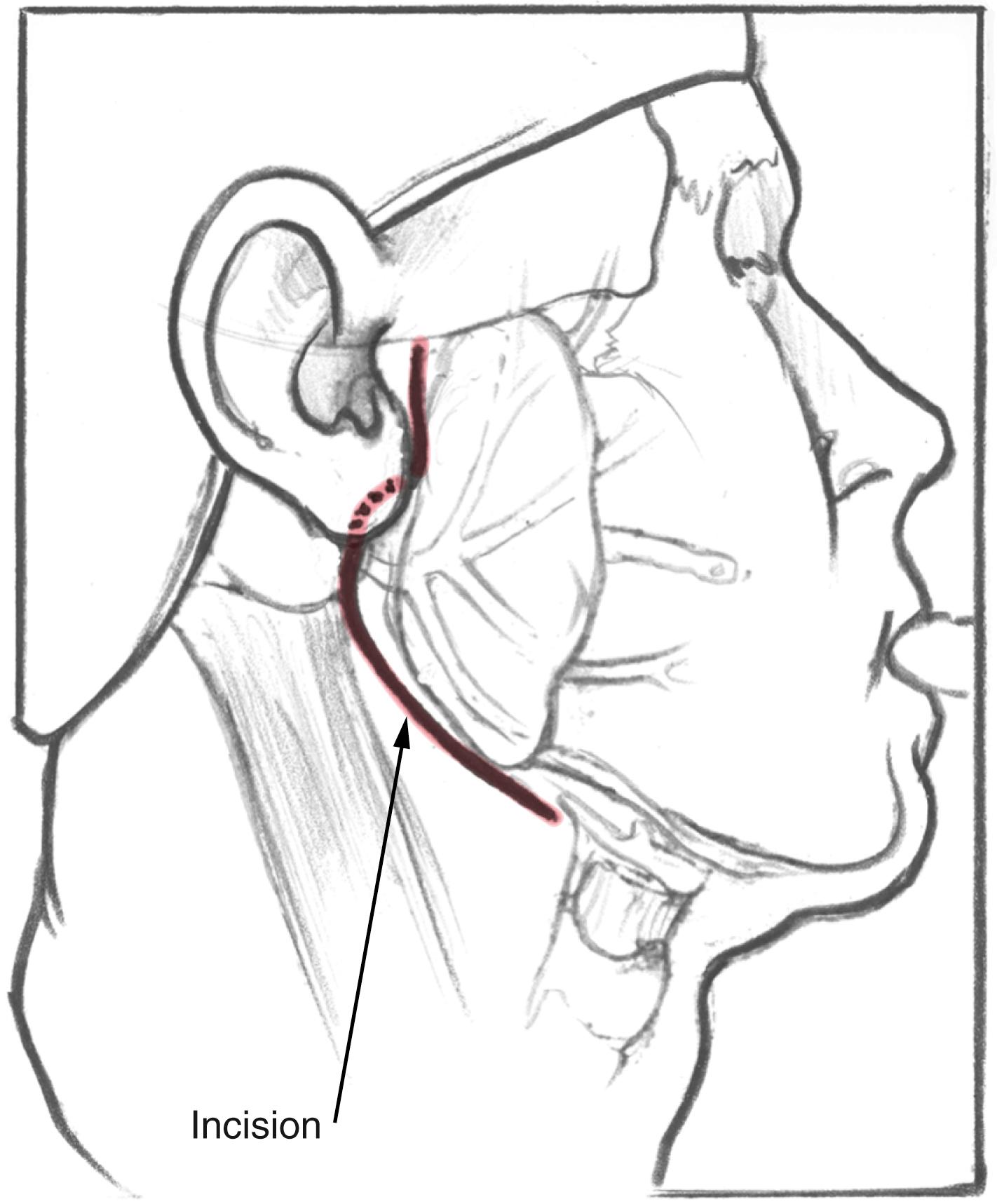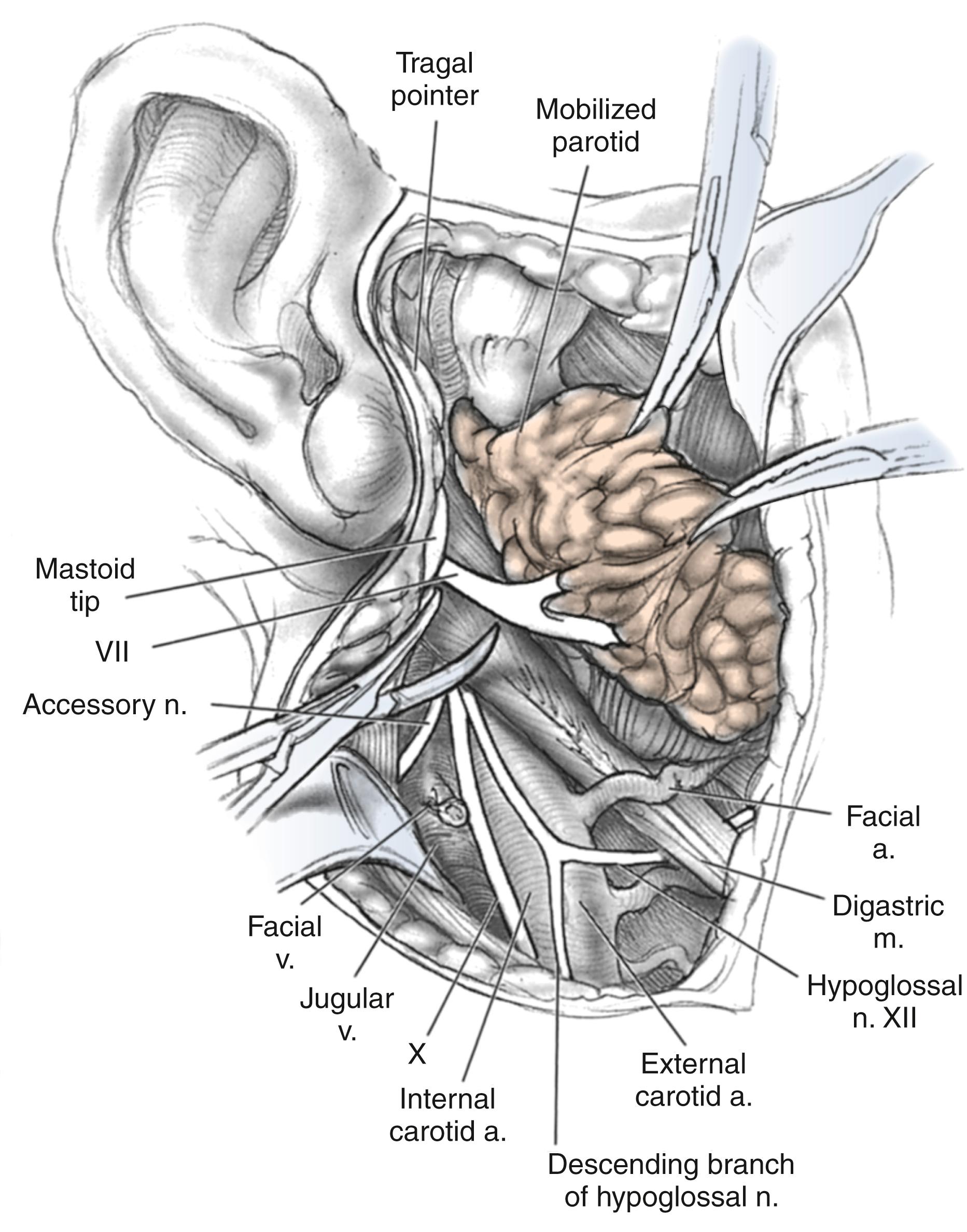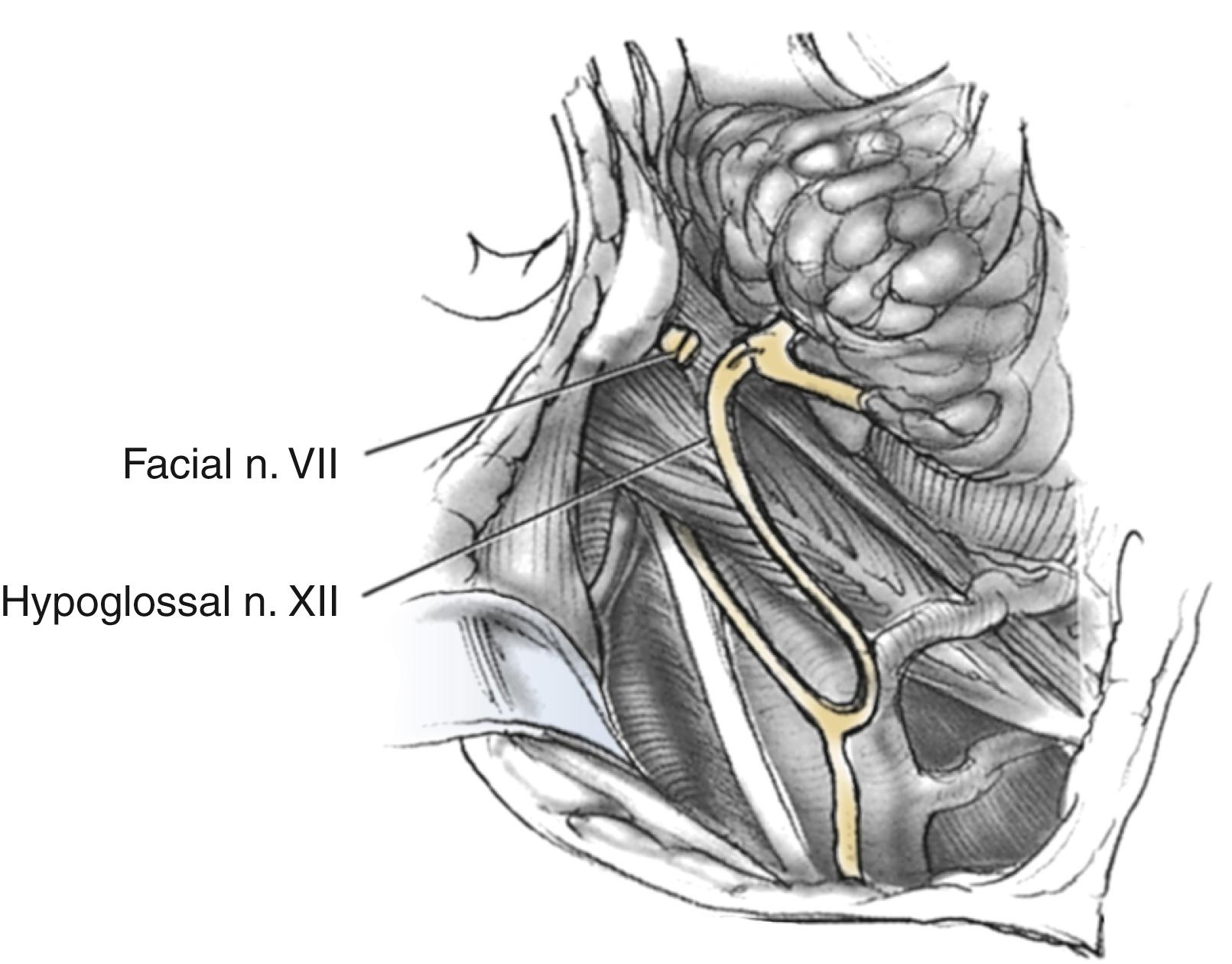Physical Address
304 North Cardinal St.
Dorchester Center, MA 02124
![]() Please access Videos to view the corresponding videos for this chapter.
Please access Videos to view the corresponding videos for this chapter.
Facial nerve paralysis can occur during the course of otologic and neurotologic surgery, either intentionally where sacrifice of the facial nerve is inevitable or inadvertently despite meticulous dissection. In such circumstances, one must be prepared to repair the nerve with the best possible technique. Direct anastomosis of the injured nerve stumps continues to offer the best chances of restoring facial function. The second best option is cable grafting with a donor nerve where direct approximation of the nerve endings is not feasible. An ideal rehabilitative procedure would restore normal facial tone and symmetry, provide strong volitional and emotional facial movement, protect the eye, and facilitate mastication, while avoiding dyskinesias and additional motor deficits. However, none of the current approaches, including immediate direct anastomosis, can fulfill these criteria.
There are situations in which neither direct anastomosis nor cable grafting is practical. Perhaps the most common scenario is when the facial nerve is severed at the brainstem during extirpation of a cerebellopontine angle tumor and there is no proximal stump. There are also cases in which a very attenuated but intact nerve fails to regain function. In these situations, an alternative to direct repair and nerve grafting is required. Several methods have been developed to address these scenarios, which include cross-facial nerve grafting; nerve-muscle pedicle grafts; and nerve substitutions, such as phrenic, accessory, hypoglossal, and ansa cervicalis.
Connection of a graft with the contralateral normal facial nerve followed by redirection of some of the fibers to the paralyzed side is termed cross-facial grafting . This method can provide some tone and symmetry of movements, while avoiding other motor deficits of the other cranial nerves. However, it partially compromises the normal nerve and only provides a scant supply of neural elements to the recipient muscles, which can lead to inconsistent results. , As such, this procedure has not achieved widespread acceptance. , Combinations of cross-facial grafting and traditional nerve substitutions have also been reported in the literature.
Nerve and muscle pedicle grafts such as temporalis muscle transfer have been used with some success but have also yielded inconsistent results. Because the results of nerve-muscle pedicle grafts and cross-facial grafts have been disappointing, modifications of these procedures have been developed that use combinations of cross-facial grafting and microvascular free muscle flaps for facial reanimation. , Further, a modification of the traditional temporalis transfer has been used that incorporates the temporalis tendon alone instead of a portion of the muscle.
Nerve substitution procedures provide a large supply of axons to the recipient muscles and are technically facile. The results are consistent and predictable. The major disadvantages include the lack of emotional facial function and the donor nerve deficit. Because of the close relationship of tongue movement to facial movement, the hypoglossal facial (CN XII-VII) anastomosis has proven to be a useful procedure in cases of facial paralysis where a direct repair or cable graft is impossible. This procedure produces varying degrees of tongue dysfunction, based on the amount of hypoglossal nerve donated for transposition to the facial nerve. Newer techniques have been designed with the goal of preserving tongue function. This chapter focuses on the hypoglossal facial anastomosis.
All patients with facial paralysis must undergo a detailed evaluation to determine the etiology and prognosis of their paralysis. The etiology is obvious in some cases as in resection of the nerve during tumor removal. In other cases, the etiology may be unknown and careful evaluation should precede any reanimation procedures to avoid missing treatable diseases and destruction of a nerve that has potential for function return. Such work-up is beyond the scope of this chapter.
In patients with known facial nerve discontinuity in which a direct repair or cable grafting is impossible, the CN XII-VII anastomosis should be performed as soon as reasonably possible. Muscle atrophy and degeneration proceed rapidly after denervation, and the severed nerve begins to experience fibrosis. , Early repair provides axonal growth to the muscles and limits the amount of muscle degeneration. In early anastomoses, new axons fill the nerve sheath before fibrosis occurs and, potentially, allow a greater supply of axons to reach the muscles. Although earlier anastomosis can give a better functional result, the CN XII-VII anastomosis is also effective after prolonged denervation and should be considered up to 2.5 years after injury. , Return of function can occur up to 4.5 years after injury.
In other cases where the continuity is preserved but the function of the nerve is in question, such as trauma, idiopathic palsy, and nerve damage in surgery, it is prudent to wait at least a year to ensure that no return of function occurs. Electrophysiological testing in these circumstances can be helpful in determining the innervation and viability of facial muscles. A positive response to electroneuronography or evoked electromyography indicates that at least some motor end plates are functional. These patients should be given the longest possible time to show spontaneous improvement in function. Some may have so few remaining neural elements that they never regain any useful function. In this situation, a CN XII-VII graft helps provide sufficient neuronal input to the muscles.
Electromyography helps detect polyphasic action potentials indicative of reinnervation and fibrillation potentials indicative of denervation. In patients with long-standing paralysis (>2.5 years), a muscle biopsy in addition to electromyography may be useful to determine viability, atrophy, or fibrosis. In patients with severe muscle atrophy and neural fibrosis, the results of reinnervation would be poor, and muscle transfers or other augmenting procedures should be considered.
The clinician should also consider the status of the contralateral CN XII when deciding on the CN XII-VII transposition. Contralateral hypoglossal paralysis is a contraindication to the standard CN XII-VII transposition, as are multiple lower cranial nerve deficits that already compromise swallowing and speech.
In addition to the standard head and neck surgical instrumentation, hypoglossal facial anastomosis requires microsurgical instruments including jeweler’s forceps to handle the nerve ends, a Castroviejo needle holder, and microforceps for knot-tying. A sterile tongue blade is useful to improve visibility when the ends of the nerves are anastomosed under microscopic vision.
Once satisfactory general endotracheal anesthesia has been obtained with the patient in the supine position, the neck is extended and the face is turned toward the side opposite the paralyzed face. The ear, face, and neck are prepared and draped using sterile technique. A standard lazy S parotidectomy incision is made in the preauricular crease and extended behind the lobule and then anteriorly about 2 cm below the angle of the mandible ( Fig. 57.1 ). If the patient has had a prior postauricular incision, the postauricular incision may also be used for the superior aspect of the incision. This is particularly true if a mobilization of the facial nerve out of the fallopian canal is planned.

Skin flaps are raised anteriorly and posteriorly. The parotid is mobilized from the anterior border of the sternocleidomastoid muscle and from the external auditory canal. The angle formed by the cartilage of the anterior external canal, known as the tragal pointer, is followed medially to the stylomastoid foramen, where the facial nerve exits the temporal bone. The nerve is dissected from the parotid gland to expose the pes anserinus and free the main trunk from the gland. The nerve is transected at the stylomastoid foramen.
The hypoglossal nerve is identified by retracting the sternocleidomastoid muscle posteriorly and exposing the great vessels of the neck. The posterior belly of the digastric muscle is retracted superiorly, and the hypoglossal nerve is found coursing inferiorly with the great vessels and then turning anteriorly as it supplies the ansa cervicalis, which descends in the carotid sheath ( Fig. 57.2 ). The hypoglossal nerve is followed anteriorly and medially as it enters the tongue muscle. The nerve is freed from its fascial attachments in the neck. The network of veins and arteries entering the internal jugular vein and external carotid artery should be controlled during this maneuver. After the nerve is freed from its attachments, it is divided as far anteriorly as is possible to gain sufficient length. The free hypoglossal nerve is rotated superiorly. Directing the nerve medial to the digastric muscle in this rotation gives the most length but is unnecessary for a satisfactory anastomosis.

There are many ways to anastomose the ends of the nerves, including collagen trays and fibrin glue, vein sheaths, laser welding, and various suture techniques. It is beyond the scope of this chapter to describe the various methods; however, several principles are almost universally agreed upon. The two ends of the nerves should be free of tension. This requirement is usually not a problem if the technique described earlier is followed. The ends should be cut sharply to provide a flush connection. The anastomosis should be as atraumatic as possible yet provide strength to prevent disruption. In patients with long-standing paralysis, it is also important to ensure that the distal facial nerve has not totally fibrosed using frozen section histological evaluation. A conventional suture technique that yields reliable results is as follows:
Under the operating microscope, the distal stump of the facial nerve and proximal stump of the hypoglossal nerves are stripped of the epineurium 2 to 3 mm from the cut ends.
The ends are freshened with a sharp, clean, perpendicular cut to provide a good flush connection.
The perineurium is approximated with two or three 9-0 nylon sutures ( Fig. 57.3 ).

The wound is closed in layers over a Penrose drain.
A fluffed, snug parotidectomy dressing is applied, and the drain is removed the next day. Perioperative antibiotics are unnecessary.
Become a Clinical Tree membership for Full access and enjoy Unlimited articles
If you are a member. Log in here